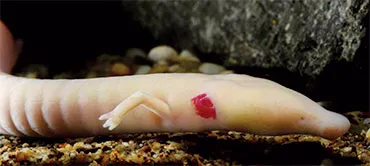Cave-dwelling salamander comes pigmented and pale
Why bother with color when living in the dark?

GOOD LOOKING Baby-doll eyes on the dark form of Europe’s cave-dwelling olm salamander (above) look almost ordinary compared with the atrophied eyes of white olms (below).
Domin Dalessi







